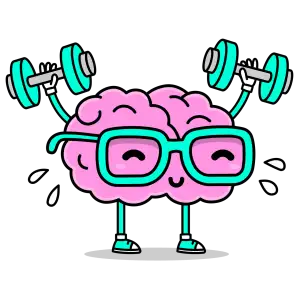Best Shoes for Hip and Back Pain: Find Relief for Your Aching Body
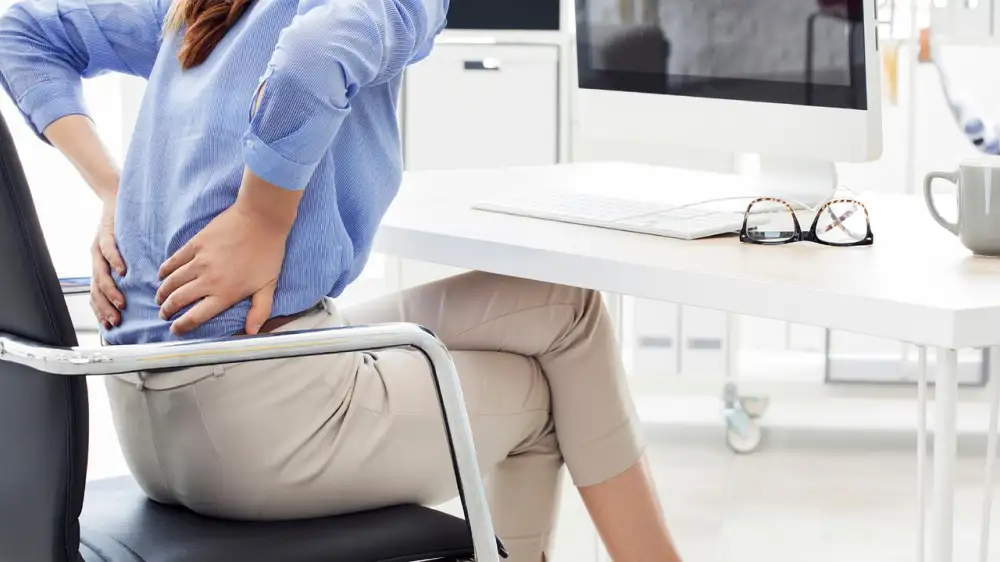
Understanding Hip and Back Pain
Hip and back pain can really mess with your day. Sometimes, the culprit is hiding in plain sight: your shoes. The wrong shoes can wreak havoc on your alignment, leading to discomfort in your hips and back.
Think about it: your feet are the foundation of your body. With every step, they absorb shock and help distribute your weight evenly. When you wear shoes that don't provide adequate support or cushioning, that force travels up your legs, impacting your hips and lower back.
So, what should you look for in shoes if you're prone to hip and back pain?
Support is Key: Look for shoes with good arch support. This helps maintain the natural alignment of your feet, which in turn, supports proper posture and reduces strain on your hips and back. Avoid flat shoes or shoes with very high heels, as they can throw off your balance and contribute to pain.
Cushioning is Your Best Friend: Shoes with ample cushioning absorb the impact of each step, reducing stress on your joints. Look for shoes with shock-absorbing materials in the soles, especially in the heel and ball of the foot.
Stability Matters: Shoes that provide good stability help control the inward and outward roll of your foot as you walk (pronation). This is crucial for maintaining proper alignment and preventing pain. Look for shoes with a wider base and features like heel counters or motion control.
Fit is Everything: Shoes that are too tight or too loose can exacerbate hip and back pain. Make sure your shoes fit comfortably, with enough room for your toes to wiggle and your feet to move naturally.
Here are some types of shoes that are often recommended for people with hip and back pain:
Motion control shoes: These shoes are designed for people who overpronate (feet roll inward excessively). They provide maximum support and stability.
Stability shoes: These shoes offer a good balance of support and cushioning and are suitable for people with neutral pronation or mild overpronation.
Cushioned shoes: These shoes prioritize cushioning and shock absorption, making them a good option for people who experience pain from impact.
Remember, finding the right shoes is a personal journey. What works for one person may not work for another. It's essential to consider your individual needs and foot type. Don't hesitate to consult with a podiatrist or physical therapist for personalized recommendations.
How Footwear Affects Your Body
Your feet are the foundation of your body. When your feet hurt, it changes the way you walk and stand, which can impact your entire body, especially your hips and back. Wearing the wrong shoes can exacerbate existing hip and back pain or even be the root cause.
>How Footwear Affects Your Body:- Support and Alignment: Shoes with poor arch support or excessive cushioning can cause your feet to roll inward (overpronation) or outward (supination). This misalignment can travel up your legs, affecting the way your hips and back align, leading to pain and discomfort.
- Gait Cycle: Your shoes influence how your foot strikes the ground and transitions through each step. Unstable or stiff shoes can disrupt your natural gait cycle, putting stress on your joints, including your hips and spine.
- Muscle Strain: When your shoes don't provide adequate support, your muscles and tendons have to work harder to compensate. This can lead to muscle fatigue, strain, and pain in your feet, legs, hips, and back.
Choosing the Right Shoes for Hip and Back Pain:
Finding shoes that provide proper support, cushioning, and alignment is crucial to alleviate and prevent hip and back pain. Here's what to look for:
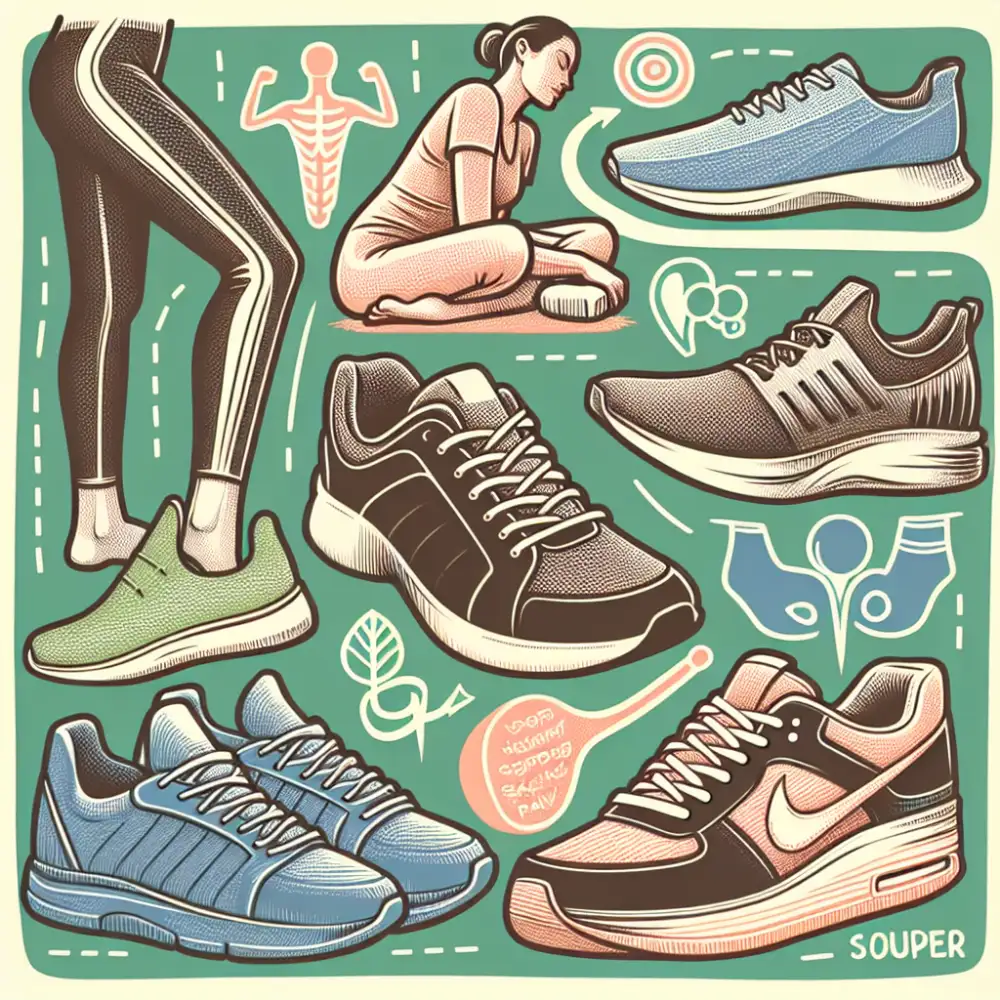
- Arch Support: Opt for shoes with good arch support to help distribute your body weight evenly and prevent overpronation or supination.
- Cushioning: Adequate cushioning absorbs shock and reduces stress on your joints. Look for shoes with shock-absorbing materials in the midsole.
- Heel Height: Avoid high heels as they can alter your posture and put excessive pressure on your lower back. Choose shoes with a low heel (1-2 inches) or flats.
- Fit: Make sure your shoes fit properly, with enough room for your toes to wiggle and a snug but not tight fit around your heel and arch.
| Shoe Feature | ASICS GEL-Kayano | Brooks Ghost | Hoka Bondi |
|---|---|---|---|
| Arch Support | Excellent | High | Moderate |
| Cushioning | GEL Technology, Firm | DNA Loft, Balanced | Maximal, Soft |
| Heel-to-Toe Drop | 10mm | 12mm | 4-6mm |
| Best For | Overpronation, Stability | Neutral Gait, Versatility | Underpronation, Impact Absorption |
Types of Shoes That May Help:
- Motion Control Shoes: Designed for overpronators, these shoes provide maximum support and stability.
- Stability Shoes: Offer a balance of support and cushioning, suitable for people with neutral arches.
- Cushioned Shoes: Ideal for people with high arches or those who need extra shock absorption.
- Orthotic-Friendly Shoes: These shoes have removable insoles, allowing you to insert custom orthotics for personalized support.
Remember, it's essential to consult with a healthcare professional or podiatrist to determine the underlying cause of your hip and back pain and receive personalized shoe recommendations. They can assess your foot type, gait, and any underlying conditions to guide you toward the best footwear options for your needs.
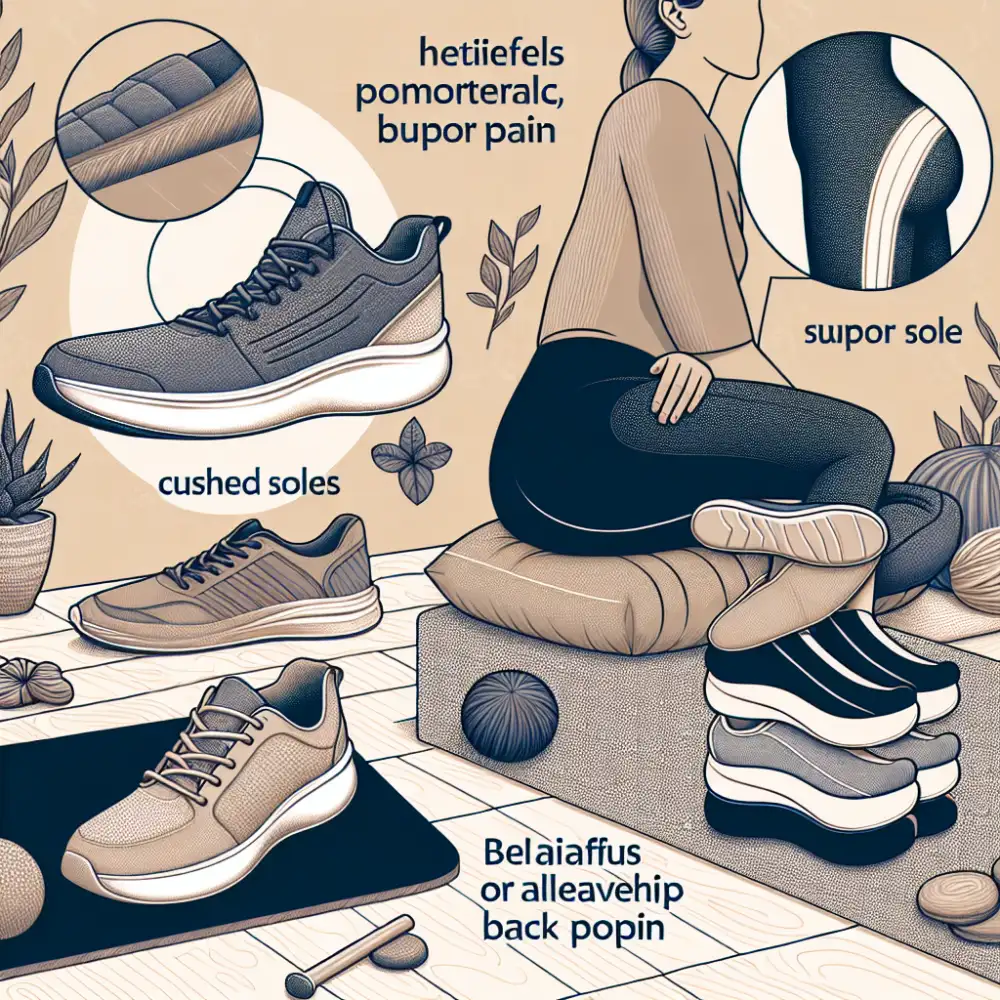
Key Features of Supportive Shoes
When it comes to finding relief from hip and back pain, the right shoes can make all the difference. Supportive shoes are designed to provide stability, cushioning, and proper alignment, which can help alleviate pressure on your joints and reduce discomfort. Here are key features to look for:
Arch Support: Good arch support is crucial for distributing your body weight evenly and preventing overpronation (excessive inward rolling of the foot). Look for shoes with built-in arch support or consider using orthotic inserts for customized support.
Cushioning: Adequate cushioning absorbs shock and reduces impact on your joints with each step. Look for shoes with ample cushioning in the heel, ball of the foot, and arch area. Materials like EVA foam and gel inserts provide excellent shock absorption.
Heel Height: Avoid high heels as they can alter your posture and put extra stress on your back. Opt for a low heel height (less than an inch) or flat shoes to maintain proper alignment.
Stability: Shoes with good stability help control the inward rolling motion of your feet, reducing strain on your hips and back. Look for features like a firm heel counter (the back part of the shoe that cups your heel) and a wide, stable base.
Flexibility: While stability is important, your shoes should also allow for some flexibility to facilitate natural foot movement. Look for shoes that bend at the ball of the foot and have a slightly flexible sole.
Breathability: Breathable materials like mesh or leather uppers allow your feet to breathe, preventing moisture buildup and discomfort.
Proper Fit: Ensure the shoes fit properly in length, width, and arch support. There should be about a thumb's width of space between your longest toe and the end of the shoe.
Remember, everyone's feet are different, so it's essential to find shoes that feel comfortable and supportive for your unique needs. If you have persistent hip or back pain, it's always a good idea to consult with a healthcare professional or podiatrist for personalized advice and recommendations.
Top Shoe Types for Pain Relief
Millions of people suffer from hip and back pain, often seeking relief through various methods, including footwear. While shoes alone can't cure these conditions, choosing the right type can significantly alleviate discomfort and improve overall well-being.
Types of Shoes for Hip and Back Pain
Support Sneakers
Support sneakers are your best friend if you have hip and back pain. Look for shoes with good arch support to help distribute your weight evenly and reduce strain on your joints. Cushioning is also key to absorb shock and minimize impact on your hips and back. Brands like Brooks, Asics, and New Balance are known for their supportive sneakers.
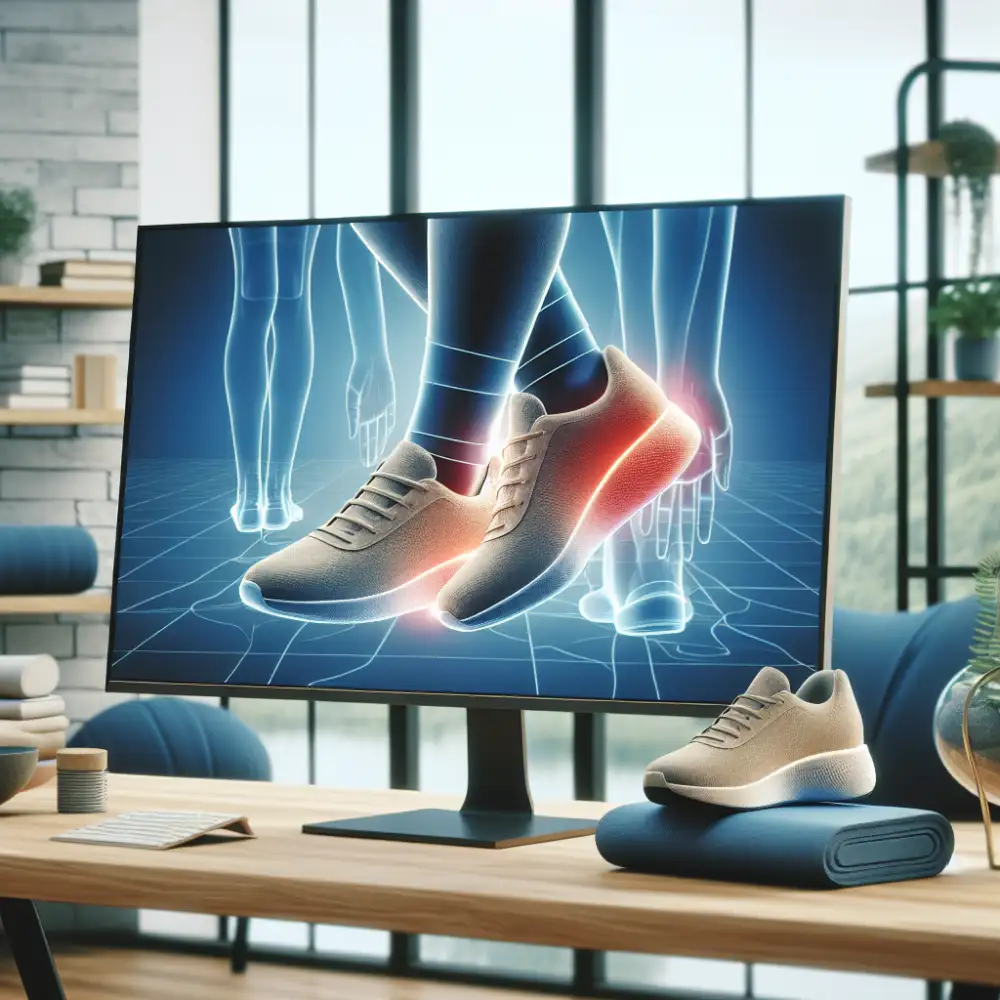

Stability Shoes
Stability shoes are designed for people who overpronate, meaning their feet roll inward excessively when they walk or run. This can put stress on your hips and back. Stability shoes have features that control pronation and provide extra support. Look for shoes with a firm midsole and a wider base.
Motion Control Shoes
Motion control shoes provide the highest level of support and stability. They're designed for people with flat feet or severe overpronation. These shoes have features like a rigid heel counter and a medial post to limit excessive foot motion.
Cushioned Shoes
Cushioned shoes are ideal for people with hip and back pain who need extra shock absorption. These shoes have thick midsoles that cushion your feet and reduce the impact on your joints. Look for shoes with technologies like gel cushioning or air cushioning.
Orthotic Shoes
Orthotic shoes are specifically designed to accommodate custom orthotics, which are inserts that support your arches and improve foot alignment. These shoes have removable insoles to make room for your orthotics.
Things to Consider When Choosing Shoes
- Proper Fit: Make sure the shoes fit properly, with enough room in the toe box and a snug fit in the heel.
- Arch Support: Look for shoes with good arch support to help distribute your weight evenly.
- Cushioning: Choose shoes with adequate cushioning to absorb shock and reduce impact.
- Heel Height: Avoid high heels, as they can put extra stress on your hips and back.
- Activity Level: Consider your activity level when choosing shoes. If you're very active, you'll need shoes with more support and cushioning.
Remember to consult with a healthcare professional or podiatrist to determine the best shoe type for your specific needs. They can assess your foot type, gait, and any underlying medical conditions to provide personalized recommendations.
Finding the Right Fit and Support
Finding the right shoes for hip and back pain can feel overwhelming. It's more than just picking a brand or style. You need something that truly supports your body's needs. Here's a breakdown to make the process easier:

Understanding Your Pain:
Different shoes address different issues. For example, flat feet might benefit from shoes with motion control and arch support, while high arches might need extra cushioning. If you're unsure, talking to a podiatrist or physical therapist can provide personalized recommendations.
Key Features to Look For:
Arch Support: Proper arch support is crucial. It helps distribute your body weight evenly, reducing strain on your hips and back. Look for shoes with good arch support built-in or consider adding orthotic inserts for extra support.
Cushioning: Shoes with ample cushioning absorb shock, especially important for those who spend hours on their feet. This lessens the impact on your joints, including your hips and spine.
Heel Height: Avoid high heels! A slight heel, around 1-2 inches, is generally acceptable, but anything higher can alter your posture and put stress on your lower back.
Flexibility and Fit: Your shoes should bend where your foot bends. Stiff shoes can restrict movement and lead to pain. Make sure the shoes fit well, with enough room for your toes and a secure fit around your heel.
Trying Before Buying:
Shop Later in the Day: Your feet naturally swell throughout the day. Trying shoes later ensures a better fit.
Wear the Right Socks: Bring the type of socks you'd typically wear with the shoes to get an accurate feel.
Walk Around: Don't just stand in the shoes. Walk around the store to see how they feel with movement.
Remember, finding the right shoes is a personal journey. What works for one person may not work for another. Be patient, try different options, and listen to your body. The right shoes can make a significant difference in managing hip and back pain and improving your overall comfort.
Additional Tips for Pain Management
While the right shoes can make a world of difference, here are some additional tips for managing hip and back pain:
Prioritize good posture: Whether sitting or standing, maintain proper alignment to reduce strain on your back and hips.
Stretch regularly: Gentle stretches can help alleviate muscle tension and improve flexibility, reducing pain.
Stay active: Engage in low-impact exercises like swimming, walking, or yoga to strengthen your core and support your back.
Maintain a healthy weight: Excess weight puts additional stress on your joints, exacerbating pain.
Use hot and cold therapy: Apply heat to relax muscles and reduce stiffness or cold to numb pain and reduce inflammation.
Consider over-the-counter pain relievers: Nonsteroidal anti-inflammatory drugs (NSAIDs) like ibuprofen can temporarily alleviate pain.
Consult a medical professional: If pain persists or worsens, seek professional advice to rule out any underlying medical conditions.

Remember, finding the best shoes for your hip and back pain is an individual journey. What works for one person may not work for another. Pay attention to your body, consult with healthcare professionals, and prioritize your comfort and well-being.
When to See a Medical Professional
While wearing supportive shoes can significantly improve hip and back pain, it's crucial to remember that footwear is not a substitute for professional medical advice. If you're experiencing persistent or severe pain, it's essential to consult a medical professional to determine the underlying cause and receive appropriate treatment.
Here are some situations when you should definitely seek medical attention:
Severe pain: If your pain is intense, debilitating, or limits your daily activities, seek medical attention immediately.
Sudden onset of pain: If your pain comes on suddenly, especially after an injury, it's important to get checked out.
Pain that worsens: If your pain progressively worsens despite wearing supportive shoes and other self-care measures, consult a doctor.
Numbness or tingling: Experiencing numbness, tingling, or weakness in your legs or feet, along with hip or back pain, could indicate a more serious condition.
Pain that interferes with sleep: If your pain keeps you awake at night or makes it difficult to find a comfortable sleeping position, it's time to see a professional.
Pain that lasts for more than a few weeks: While some muscle soreness is normal, pain that persists for an extended period should be evaluated.
Other symptoms: If you experience fever, chills, unexplained weight loss, or other concerning symptoms alongside hip or back pain, seek medical advice promptly.
Remember, early diagnosis and treatment of underlying medical conditions are crucial for preventing further complications and improving your overall well-being. While finding the right shoes can provide significant relief, it's essential to prioritize your health and seek professional guidance when needed.
Published: 23. 06. 2024
Category: Food

